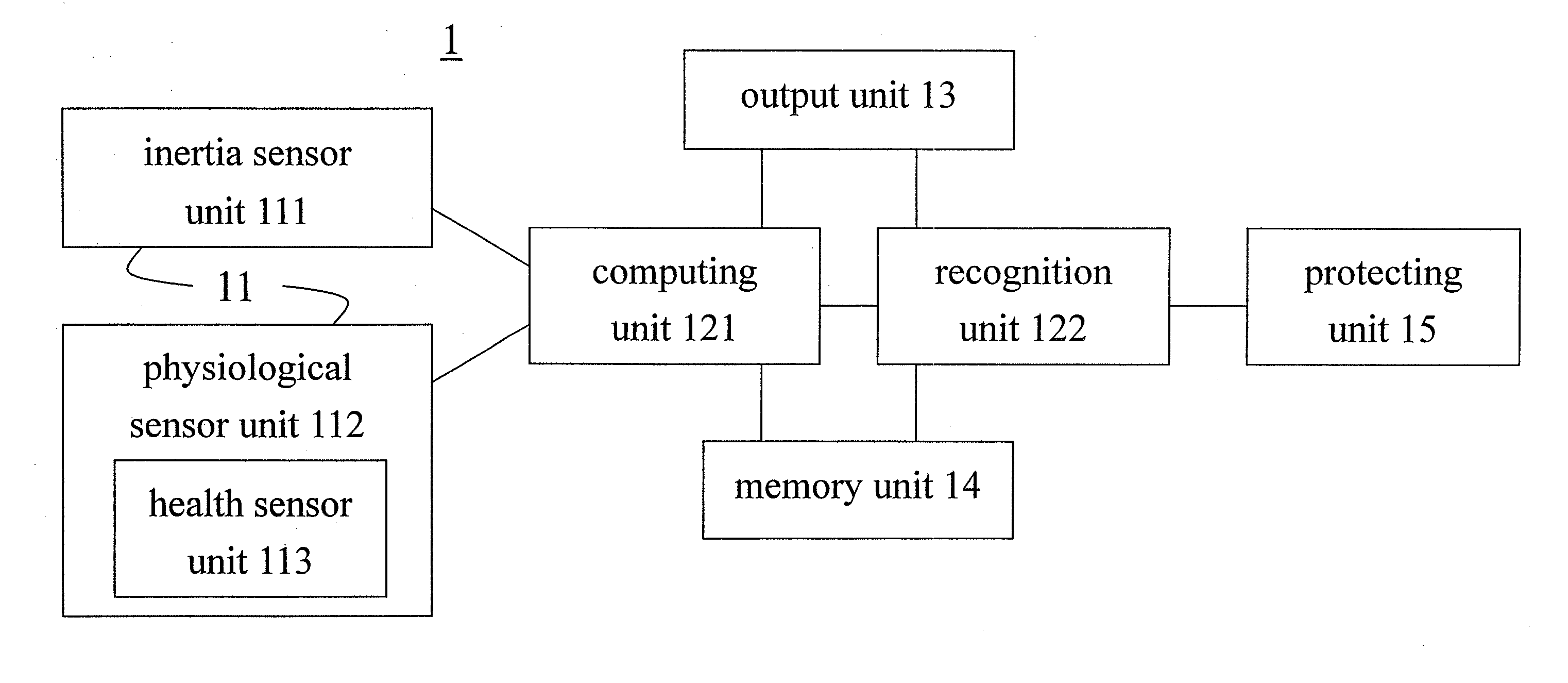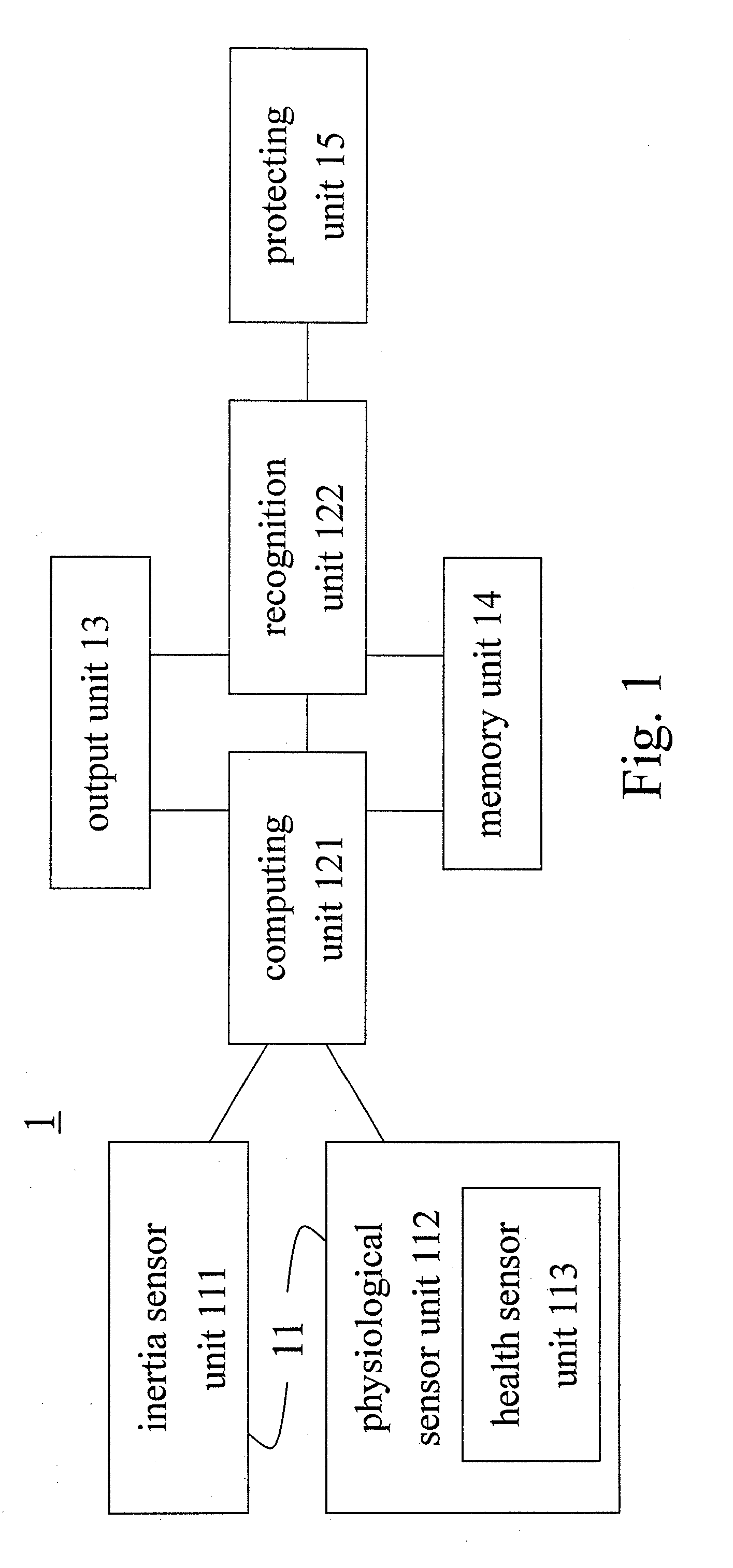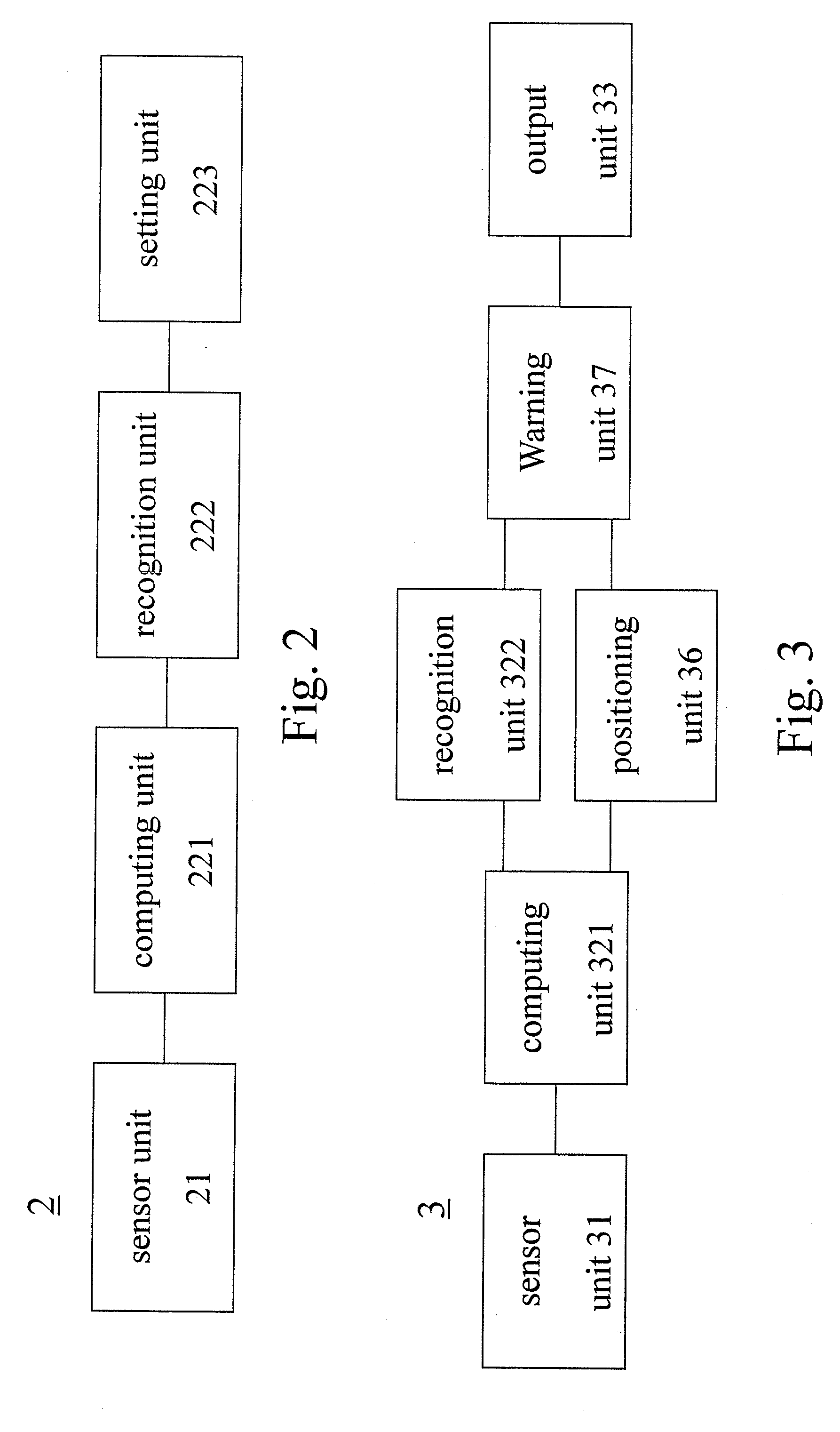Apparatus for identifying falls and activities of daily living
a technology for falling and activities, applied in the field of recognition devices, can solve the problems of elderly fallers incapable of freely acting, serious physical trauma and sequelae, and degradation of mobility, and achieve the effect of improving the recognition rate and protecting the user from injury
- Summary
- Abstract
- Description
- Claims
- Application Information
AI Technical Summary
Benefits of technology
Problems solved by technology
Method used
Image
Examples
first embodiment
[0038]FIG. 1 is a block diagram illustrating the recognition device 1 in the present invention. The recognition device 1 includes an inertia sensor unit 111, a physiological sensor unit 112, a computing unit 121, a recognition unit 122, an output unit 13, a memory unit 14 and a protecting unit 15.
[0039]Preferably, the physiological sensor unit 112 can be an electromyography sensor unit, which can measure the physiological reactions of the muscle groups, such as myoelectric signals, to obtain the physiological signal for determining whether the fall is going to happen. In addition, since the physiological sensor unit 12 should keep sensing for distinguishing the falls from the ADLs when the fall happens, the physiological sensor unit 12 would measure continuously the signal of the ADLs to obtain the information of the ADLs, which can record the health state and the amount of exercise. Moreover, the recognition device 1 can generate a signal threshold based on the information of the A...
second embodiment
[0049]FIG. 2 is a block diagram illustrating the fall recognition device 2 in the present invention. The fall recognition device 2 includes a sensor unit 21, a computing unit 221, a recognition unit 222 and a setting unit 223.
[0050]In the aforementioned embodiment, the sensor unit 21 is configured to measure a sensor signal and the computing unit 221 is configured to compute the sensor signal. The computed result can be stored in the computing unit 221 or a memory unit. In addition, a signal threshold, which is a fall reference to determine whether the fall is going to happen, can be generated from the computed result computed based on the sensor signals measured continuously through the ADLs. Generally, the recognition unit 222 would determine the fall is going to happen if the sensor signal is higher than the signal threshold, and the recognition unit 222 would determine the fall does not happen if the sensor signal is lower than the signal threshold.
[0051]In fact, every user has ...
third embodiment
[0054]FIG. 3 is a block diagram illustrating the fall positioning device 3 in the present invention. The fall positioning device 3 includes a sensor unit 31, a computing unit 321, a recognition unit 322, an output unit 33, a positioning unit 36 and a warning unit 37.
[0055]In the aforementioned embodiment, the sensor unit 31 can be a physiological sensor unit and / or the inertia sensor unit, wherein the physiological sensor unit can be an electromyography sensor unit and the inertia sensor unit can be an accelerometer and / or a gyroscope. The physiological signal measured by the physiological sensor unit can be computed by the computing unit 321 to estimate a distance having been moved and the moving direction of the user and the moving direction, such as going forwards, backwards, upwards or downwards or turning right or left.
[0056]In the aforementioned embodiment, the sensor signal measure by the sensor unit 31 can be computed by the computing unit 321 to obtain a computed result, wh...
PUM
 Login to View More
Login to View More Abstract
Description
Claims
Application Information
 Login to View More
Login to View More - R&D
- Intellectual Property
- Life Sciences
- Materials
- Tech Scout
- Unparalleled Data Quality
- Higher Quality Content
- 60% Fewer Hallucinations
Browse by: Latest US Patents, China's latest patents, Technical Efficacy Thesaurus, Application Domain, Technology Topic, Popular Technical Reports.
© 2025 PatSnap. All rights reserved.Legal|Privacy policy|Modern Slavery Act Transparency Statement|Sitemap|About US| Contact US: help@patsnap.com



